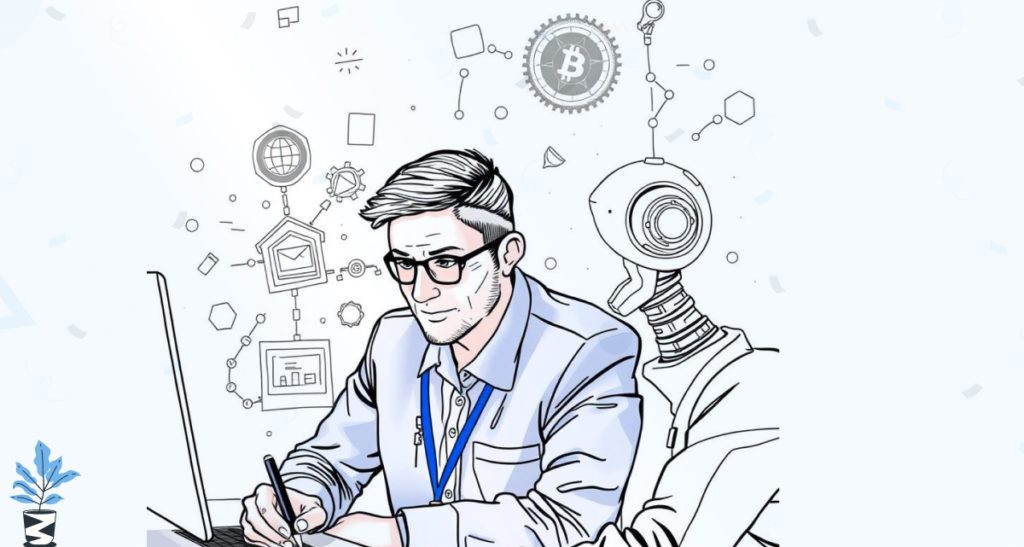
The modern workplace is undergoing a digital transformation that extends far beyond traditional software solutions. AI agents in employee experience are emerging as game-changing tools that promise to revolutionize how organizations interact with their workforce. From streamlining routine inquiries to providing personalized support around the clock, these intelligent systems are reshaping the landscape of human resource management.
As organizations grapple with evolving employee expectations and the need for more efficient HR processes, the integration of AI assistants HR solutions has become increasingly critical. However, while the potential benefits are substantial, it’s essential to understand both the capabilities and limitations of these technologies to implement them effectively.
This comprehensive exploration examines how virtual agents are transforming employee experience, addresses whether they can truly replace human interaction, discusses their limitations in employee engagement, and provides insights on maintaining the crucial human element in HR operations. Additionally, we’ll explore how AI UX in HR systems is creating more intuitive and responsive workplace environments.

Looking for the Best Free HR Software India ? Check out the Best Free HR Software India.
How Are AI Agents Improving Employee Experience in HR?
Streamlining Routine HR Inquiries
AI agents in employee experience excel at handling repetitive, frequently asked questions that traditionally consumed significant HR personnel time. These intelligent systems can instantly provide information about company policies, benefits enrollment, leave balances, and payroll inquiries. Unlike human representatives who may need to search through documentation or consult with colleagues, AI agents access comprehensive databases instantaneously, providing accurate responses 24/7.
The impact on employee satisfaction is measurable. When employees can quickly resolve simple queries without waiting for HR office hours or email responses, their overall experience improves significantly. This immediate accessibility particularly benefits remote workers and employees across different time zones, ensuring consistent support regardless of location or schedule.
Personalizing Employee Interactions
Modern AI assistants HR systems leverage machine learning algorithms to understand individual employee preferences and history. They can provide personalized recommendations for career development opportunities, suggest relevant training programs based on current roles and career aspirations, and even remind employees about important deadlines or benefits enrollment periods.
This personalization extends to communication style adaptation. Advanced AI agents can adjust their tone and complexity based on the employee’s position, experience level, and previous interaction patterns, creating more natural and effective communication experiences.
Automating Complex HR Workflows
Virtual agents are increasingly capable of managing complex, multi-step processes that previously required human intervention. These include onboarding new employees, coordinating interview schedules, processing leave requests, and managing performance review cycles. By automating these workflows, organizations can ensure consistency, reduce processing time, and minimize human error.
For example, an AI agent can guide new employees through the complete onboarding process, ensuring they complete all necessary paperwork, attend required training sessions, and receive appropriate system access. This systematic approach reduces the likelihood of overlooked steps while providing a structured, welcoming experience for new team members.
Enhancing Data-Driven Decision Making
AI UX in HR systems generates valuable insights through continuous analysis of employee interactions and patterns. These systems can identify common pain points, frequently asked questions, and areas where employees struggle to find information. This data enables HR teams to proactively address issues, improve resources, and refine processes before problems escalate.
Can AI Agents Really Replace Human Interaction at Work?
The Scope of AI Capabilities
While AI agents in employee experience demonstrate impressive capabilities in handling routine tasks and providing information, the question of replacement versus augmentation requires careful consideration. Current AI technology excels at processing structured data, following predetermined logic paths, and providing consistent responses to defined scenarios.
However, AI agents operate within programmed parameters and lack the emotional intelligence, contextual understanding, and creative problem-solving abilities that characterize human interaction. They can process language patterns and provide appropriate responses, but they cannot truly understand emotional nuance or adapt to unprecedented situations requiring human judgment.
Areas Where Human Interaction Remains Essential
Certain HR functions inherently require human empathy, judgment, and interpersonal skills that AI cannot replicate. Conflict resolution, disciplinary actions, sensitive personal discussions, and complex employee relations issues demand human understanding and emotional intelligence. Employees dealing with personal crises, workplace harassment, or significant life changes need human compassion and nuanced support.
The Hybrid Approach: Augmentation, Not Replacement
The most effective implementation of virtual agents involves augmentation rather than replacement of human HR professionals. AI handles routine inquiries, data processing, and initial screening, freeing HR personnel to focus on strategic initiatives, complex problem-solving, and relationship building.
This hybrid approach maximizes the strengths of both AI and human capabilities. AI provides consistency, availability, and efficiency for routine tasks, while humans contribute creativity, empathy, and complex decision-making skills for situations requiring nuanced judgment.
Building Trust in AI-Human Collaboration
Successful integration of AI UX in HR systems requires building employee trust in AI capabilities while maintaining clear channels for human interaction when needed. Employees must understand when they’re interacting with AI versus human representatives and have easy access to escalate issues requiring human intervention.
Transparency about AI limitations and capabilities helps set appropriate expectations and prevents frustration when AI cannot address complex or sensitive issues. Clear escalation paths ensure employees can transition seamlessly from AI assistance to human support when necessary.
What Are the Limitations of AI in Employee Engagement?



Emotional Intelligence Gaps
Despite advances in natural language processing, AI agents in employee experience struggle with emotional intelligence and empathy. They can recognize certain emotional keywords and respond with programmed empathetic phrases, but they cannot genuinely understand or respond to the full spectrum of human emotions and complex psychological needs.
Cultural and Contextual Understanding
Workplace cultures vary significantly between organizations, departments, and even individual teams. AI assistants’ HR systems may struggle to understand and adapt to these nuanced cultural differences, potentially providing responses that feel impersonal or inappropriate for specific organizational contexts.
Cultural sensitivity, humor, and informal communication styles that contribute to positive workplace culture are challenging for AI to navigate effectively. These elements often require a deep understanding of human psychology and social dynamics that current AI technology cannot fully comprehend.
Handling Ambiguous or Complex Scenarios
While virtual agents excel at processing clear, well-defined requests, they often struggle with ambiguous questions or complex scenarios that require interpretation and creative problem-solving. Employees may present issues that don’t fit predefined categories or require consideration of multiple variables and potential outcomes.
Human problems are rarely straightforward, and employee concerns often involve multiple interconnected factors that require holistic understanding and flexible thinking. AI systems may provide technically correct but contextually inappropriate responses when faced with such complexity.
Privacy and Trust Concerns
Employee engagement requires trust, and some employees may feel uncomfortable sharing personal information or sensitive concerns with AI systems. Despite security measures, concerns about data privacy, storage, and potential misuse can create barriers to full engagement with AI UX in HR systems.
How Can HR Use AI Agents Without Losing the “Human Touch”?
Designing Human-Centered AI Experiences
Successful implementation of AI agents in employee experience requires intentional design that prioritizes human needs and preferences. This involves creating AI interactions that feel natural and supportive rather than cold or robotic. Using conversational language, acknowledging limitations, and expressing appropriate concern for employee wellbeing helps maintain human-like qualities in AI interactions.
The key is programming AI to recognize when human intervention is needed and facilitating smooth transitions between AI and human support. This might involve detecting emotional distress, complex problem indicators, or explicit requests for human assistance.
Establishing Clear AI-Human Boundaries
Organizations must clearly define which functions AI assistants HR will handle and which require human involvement. This transparency helps employees understand system capabilities and sets appropriate expectations. Clear communication about AI limitations prevents frustration and ensures employees know when and how to access human support.
Developing explicit escalation protocols ensures that complex or sensitive issues are promptly directed to appropriate human resources. These protocols should be easily accessible and clearly communicated to all employees.
Maintaining Human Oversight and Quality Control
Virtual agents require ongoing human oversight to ensure they provide accurate, appropriate, and helpful responses. Regular review of AI interactions, analysis of escalated issues, and continuous training help maintain quality standards and identify areas for improvement.
Human HR professionals should regularly review AI-generated responses, analyze employee feedback, and make necessary adjustments to ensure the AI system aligns with organizational values and employee needs.
Integrating AI with Human-Led Initiatives
Effective AI UX in HR systems implementation involves integrating AI capabilities with human-led initiatives rather than replacing them. AI can support human efforts by handling routine tasks, providing data analysis, and freeing HR professionals to focus on relationship building, strategic planning, and complex problem-solving.
For example, AI might handle initial screening of employee feedback, categorize issues, and provide preliminary analysis, while human professionals focus on developing action plans and implementing solutions that address underlying concerns.
Personalizing AI Interactions
Advanced AI agents in employee experience can be programmed to recognize individual employee preferences, communication styles, and historical interactions. This personalization helps create more human-like experiences by adapting responses to individual needs and preferences.
However, personalization must be balanced with privacy considerations and should always include options for employees to interact with human representatives when preferred.
Continuous Feedback and Improvement
Implementing feedback mechanisms allows employees to evaluate AI interactions and provide suggestions for improvement. This ongoing dialogue helps refine AI capabilities while demonstrating organizational commitment to employee experience and continuous improvement.
Regular surveys, feedback forms, and focus groups can provide valuable insights into how employees perceive AI interactions and where improvements are needed to maintain the human touch in HR services.
Conclusion
The integration of AI agents in employee experience represents a significant opportunity for organizations to enhance HR efficiency while improving employee satisfaction. However, success depends on thoughtful implementation that recognizes both the capabilities and limitations of AI technology.
AI assistants HR and virtual agents excel at handling routine tasks, providing instant information access, and streamlining administrative processes. Yet they cannot replace the human elements of empathy, complex decision-making, and authentic relationship building that remain essential for effective employee engagement. Ready to explore how AI agents can enhance your employee experience while maintaining the human element your organization needs? Discover Qandle’s innovative HR solutions that combine advanced technology with human-centered design to create exceptional workplace experiences for your team.
Software You Need For All Your HR Process